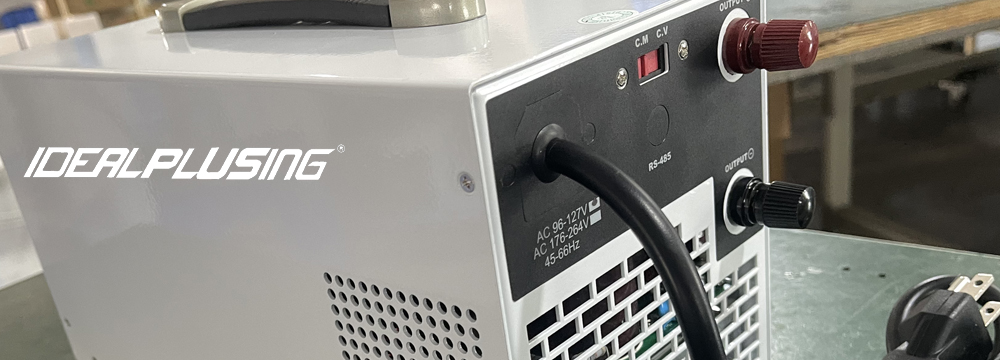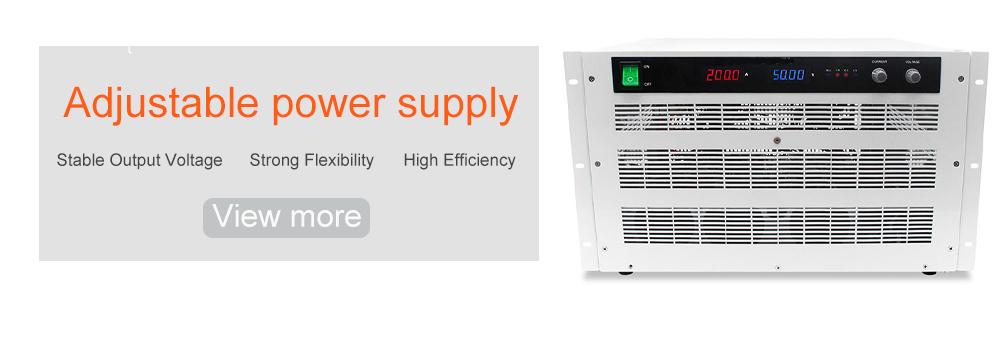For operators who have just started using stable power supplies, they lack a substantial understanding of the basic concepts of power supplies, such as constant voltage, constant current, Ohm's law, and the main structure of power supplies.
The following is analyzed in three aspects:
1. There is voltage but no current, or there is current but no voltage
Whether it is the case, the power supply is working normally. The operator should check whether his load is in good contact, whether the load is short-circuited or open-circuited, whether the load meets the specifications, etc.
In extreme cases, if the power supply has voltage output (constant voltage state) and the load line is broken, the output current is naturally zero. Similarly, if the power supply has current output (constant current state) and the load is short-circuited, the output voltage is naturally zero.

2. When adjusting the voltage, the no-load voltage cannot be adjusted
Some operators like to turn the "current adjustment" potentiometer to the left, so that the no-load voltage of the power supply cannot be adjusted. This shows that he lacks a substantial understanding of "current regulation".
Because the power supply consumes a little current even when it is unloaded, and if you turn the "current regulation" to zero, not even a little current will be released, and of course the no-load voltage will not rise. Therefore, the "current regulation" should generally not be adjusted to zero (the above situation will not occur if it is adjusted to the right about a quarter of a turn).
3. The power supply has voltage output and current output
If the voltage is adjusted, the voltage cannot be adjusted. Or the power supply has voltage output and current output. If you want to increase the current, the current cannot be adjusted.
This is because the operator is not very clear about the concepts of "constant voltage" and "constant current". If the "constant voltage" light is on, it means that the power supply is working in a constant voltage state (it can be considered that the voltage is in an active position).
The size of the output current at this time is determined by the load, not adjusted by the operator (it can be said that the current is in a passive position). If you turn the "current regulation" knob to the right at this time, the current will not increase.
But if you turn the "voltage regulation" knob to the right at this time, the output voltage will increase, and the output current will also increase accordingly. (Voltage is the master, and current is the slave).
Similarly, if the "constant current" light is on, it means that the power supply is working in the constant current state. At this time, the output voltage is not "adjusted" but determined by the load.
Only by adjusting the "current adjustment" knob can the output current change, and the output voltage also changes accordingly. (Here the current is the master and the voltage is the slave)
In short, it is necessary to clarify the master-slave relationship. When the power supply is in the "constant current" state, adjust the current, and when it is in the "constant voltage" state, adjust the voltage to change the voltage and current on the load.
Adjustable power supply principle
The adjustable power supply adopts the current internationally advanced high-frequency modulation technology. Its working principle is to widen the voltage and current of the switching power supply, realize the wide range of voltage and current adjustment, and expand the current application of DC power supply.
The control chip of the DC regulated power supply adopts the currently more mature imported components, and the power components adopt the latest high-power devices developed internationally.
The adjustable DC regulated power supply design eliminates the bulky volume of the traditional DC power supply due to the power frequency transformer.
Compared with traditional power supplies, high-frequency DC power supplies have the advantages of small size, light weight, and high efficiency. At the same time, it also creates conditions for reducing the size of high-power DC power supplies.
This power supply is also called high-frequency adjustable switching power supply. The adjustable DC regulated power supply has complete protection functions, the overvoltage and overcurrent points can be continuously set and predicted, and the output voltage can be controlled by a touch switch.






